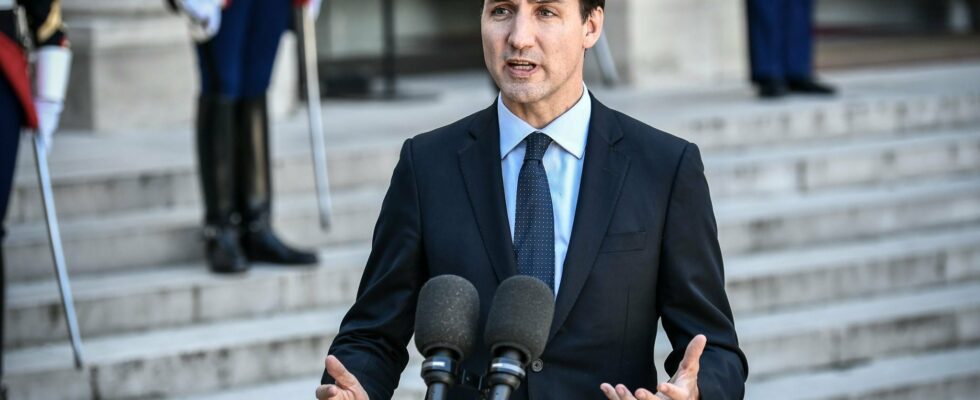The rumor had been circulating insistently since mid-December. This Monday, Canadian Prime Minister Justin Trudeau announced that he soon intended to resign from his functions as head of government and leader of the Liberals “as soon as the party has chosen its next leader.” He should remain in office until then.
For several weeks, Justin Trudeau seemed very weakened. In mid-December, he notably received the resignation of Chrystia Freeland, Deputy Prime Minister in charge of Finance – one of the heavyweights in his government – whom he had asked to change portfolio by taking the head of a ministry Canadian-American Relations. In a critical letter broadcast on the social network
Declining popularity
This resounding resignation came after several complicated weeks for the Liberal Party, during which several ministers in the Trudeau government said they would not be candidates in the next federal election. It also comes at a time when the Prime Minister’s popularity is at its lowest level, 10 points behind that of his main opponent, the leader of the Conservative Party Pierre Poilievre.
After this major political crisis, Justin Trudeau’s support fell one after the other. On December 23, the Liberal caucus of the Atlantic provinces (which brings together Liberal MPs from the four maritime provinces, in the east of the country) had already withdrawn its confidence in the Prime Minister, followed by the Ontario caucus and the of Quebec.
Distrust of Liberal MPs
Problem: these two provinces alone concentrate more than half of the Canadian population and the two largest contingents of deputies in the House of Commons. Worse still, more than 85% of the 160 Liberal deputies elected in 2021 were elected in a constituency in the east of the country. With the meeting of all the representatives of his party on Wednesday January 8, Justin Trudeau was up against the wall.
Change of era
Justin Trudeau’s resignation comes after nearly a decade of the Liberal at the head of Canada. Elected for the first time during the Canadian federal elections of October 2015 – he was then 42 years old – the son of Pierre Elliott Trudeau followed in the footsteps of his father, Prime Minister between 1968 and 1984. Since then, his party has been again elected twice: in 2019, then in 2021, during early federal elections that he had called in the midst of the Covid-19 pandemic. At the time, his popularity was rising, boosted by his management of the epidemic. His opponents then widely criticized the holding of these elections in this particular context, two years before the date initially planned. The Liberal Party had obtained a narrow majority and had allied itself with the 25 elected officials of the “New Democratic Party”, a left-wing party.
In Canada, it is up to the Prime Minister to call legislative elections within a given period of four years following the last federal election. Whatever happens, a new vote should have been held in Canada this year, at the latest before October 2025. And for the Liberals, the projections are very bad: the party would obtain four times fewer seats than four years ago, according to the poll aggregator 338Canada. Pierre Poilievre’s Conservative Party could obtain more than 230 seats. A majority more than comfortable.
For the moment, the date of the upcoming federal elections has not been specified. They will undoubtedly take place in the spring, once the Liberal Party has appointed its successor responsible for leading the campaign against the conservatives. During his speech, Justin Trudeau announced an exceptional extension of the parliamentary session until March 24, 2025.
